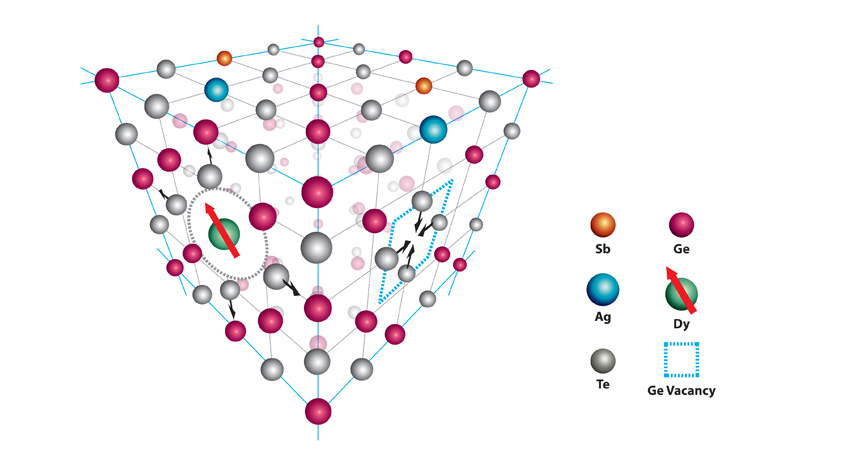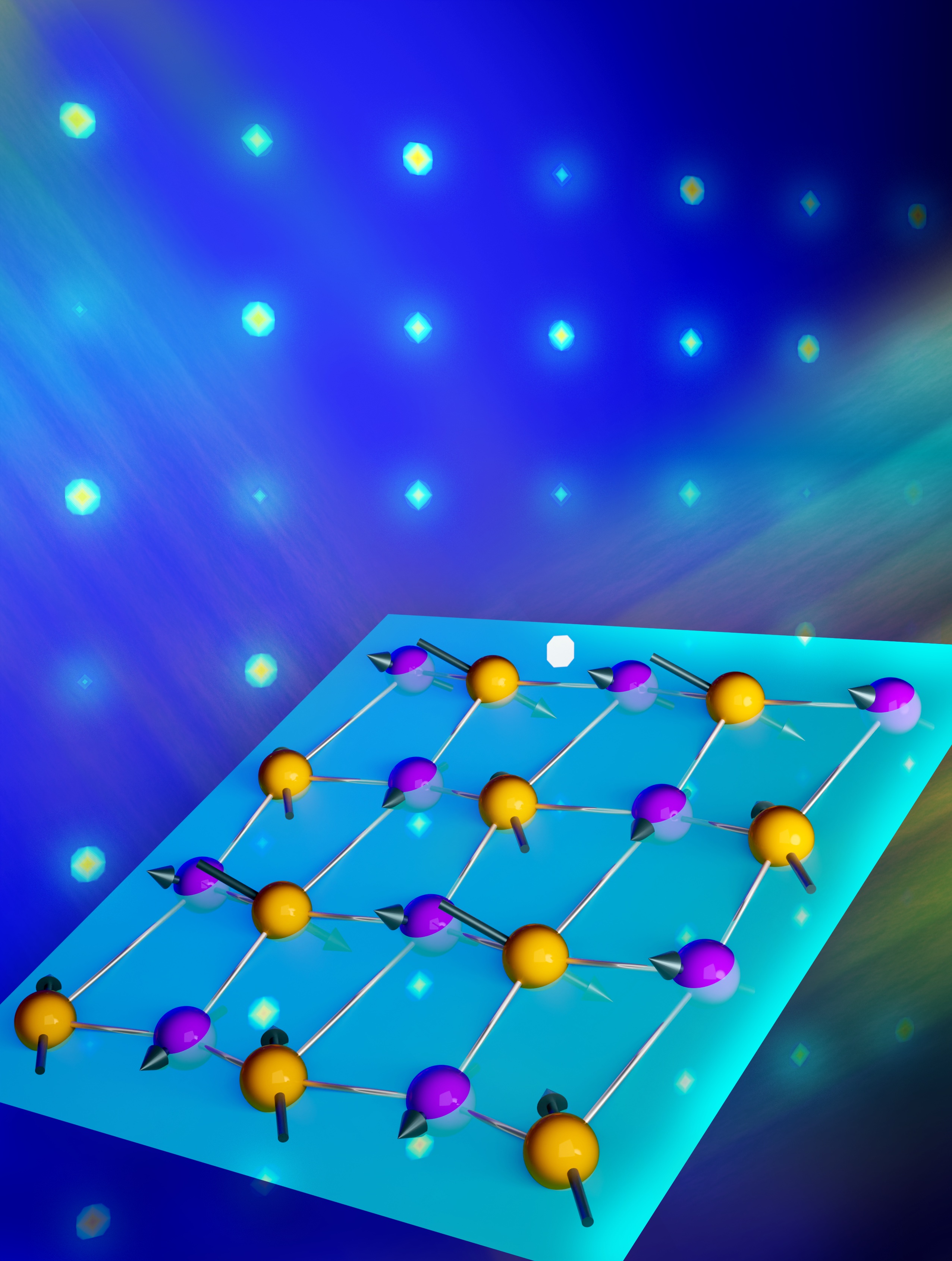Rare Earth Atoms Make the Best Thermoelectrics Better
Small addition of rare earth element makes a big difference in converting heat to electricity.

The Science
Research has shown that small amounts (1-2%) of large-sized rare earth dysprosium atoms distort the structure of a thermoelectric material, changing the way heat and electrical charges move through the material, enabling higher energy carriers (electrons as well as positively charged vacancies known as “holes” caused by missing electrons in atoms) to move preferentially through the material, improving the conversion of heat to electricity.
The Impact
One of the best thermoelectric materials was made 15% better at converting waste heat to electricity by adding a small amount of a rare earth element to the material. The figure-of-merit (ZT) for the thermoelectric energy conversion process increased from 1.3 to 1.5, a big step toward the goal of ZT = 2.0, which is regarded as the requirement for the commercialization of thermoelectric power generation.
Summary
One of the best thermoelectric materials for converting heat to electricity was made 15% better based on discoveries in BES-supported research conducted at Ames Laboratory. Adding a small amount of dysprosium to the thermoelectric material known as TAGS-85 (Ag6.52Sb6.52Ge36.96Te50) distorts the local crystalline structure and enables higher energy carriers to move preferentially through the material while presenting barriers to the transport of lower energy carriers. Researchers found that the larger size of dysprosium atoms along with its local magnetic characteristics modifies the complex interplay between electronic and thermal transport in the material that is responsible for the electrical current that is generated in the material when one end of a thermoelectric device is heated to a higher temperature. Adding dysprosium to TAGS-85 raises the thermoelectric figure of merit (ZT) for the material from 1.3 to 1.5, an improvement of 0.2 towards the goal of ZT = 2.0 needed for the commercialization of thermoelectric power generation. Understanding how small levels of added atoms impacts thermoelectric properties helps researchers design even better thermoelectric materials.
Contact
Evgenii Levin
Ames Laboratory
levin@iastate.edu
Tom Lograsso
Ames Laboratory
lograsso@ameslab.gov
Funding
Basic Research: DOE Office of Science, Office of Basic Energy Sciences
Publications
E. M. Levin, et al. “Enhancement of Thermopower of TAGS-85 High-Performance Thermoelectric Material by Doping with Rare Earth Dy." 2012. Advanced Functional Materials 22:2766-2774. DOI 10.1002/adfm.201103049.
Related Links
Highlight Categories
Performer: DOE Laboratory



